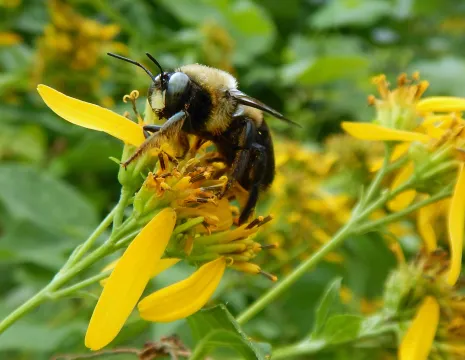Active banners: 1 Visible banners: 1
Banner ID: 25 Has content: true
Join us for the Teaching Economics through Climate – The Snowmobile Business Plan - January 13, 2026 4-5pm ET
Look At That: Pollinators
Provided by: Illinois Math and Science Academy |Published on: May 6, 2025
Lesson Plans
2345
Synopsis
- This is a lesson from the Illinois Math and Science Academy designed to teach second-grade students the important role pollinators play in maintaining a healthy ecosystem.
- Hands-on exploration will allow students to make observations to determine the components of successful pollination.
- Students will develop a model to show how pollinators work.

Subjects: Science
Authors: Becky Chaplin-Kramer
Region: Illinois
Languages: English
Teaching Materials
Positives
- Students have multiple opportunities for hands-on learning.
- Multiple NGSS Science and Engineering Practices are incorporated into this lesson.
- Opportunities for collaboration exist throughout this exploration.
Prerequisites
- Previous experience with the Science and Engineering Practice of Developing and Using Models is necessary.
- Student pages, a PowerPoint presentation, and other materials can be found under Additional Files.
Differentiation & Implementation
- This lesson can be used if additional background knowledge is required prior to developing the model or as a culminating writing activity on pollinators.
- Students can work alone or in groups to develop their models.
- A Gallery Walk can be incorporated after the students design their models to receive feedback from classmates.
- Even though this is written as a second-grade lesson, the material can be extended through fifth grade with minimal changes to the lesson.
- This lesson can be connected to climate change by emphasizing the importance of pollinators in maintaining healthy ecosystems.
- Students can extend their knowledge of pollinators and the connection to climate change by talking about the effects that rainfall, periods of drought, and extreme weather have on local pollinators.
Scientist Notes
Teaching Tips
Standards
Resource Type and Format
All resources can be used for your educational purposes with proper attribution to the content provider.



